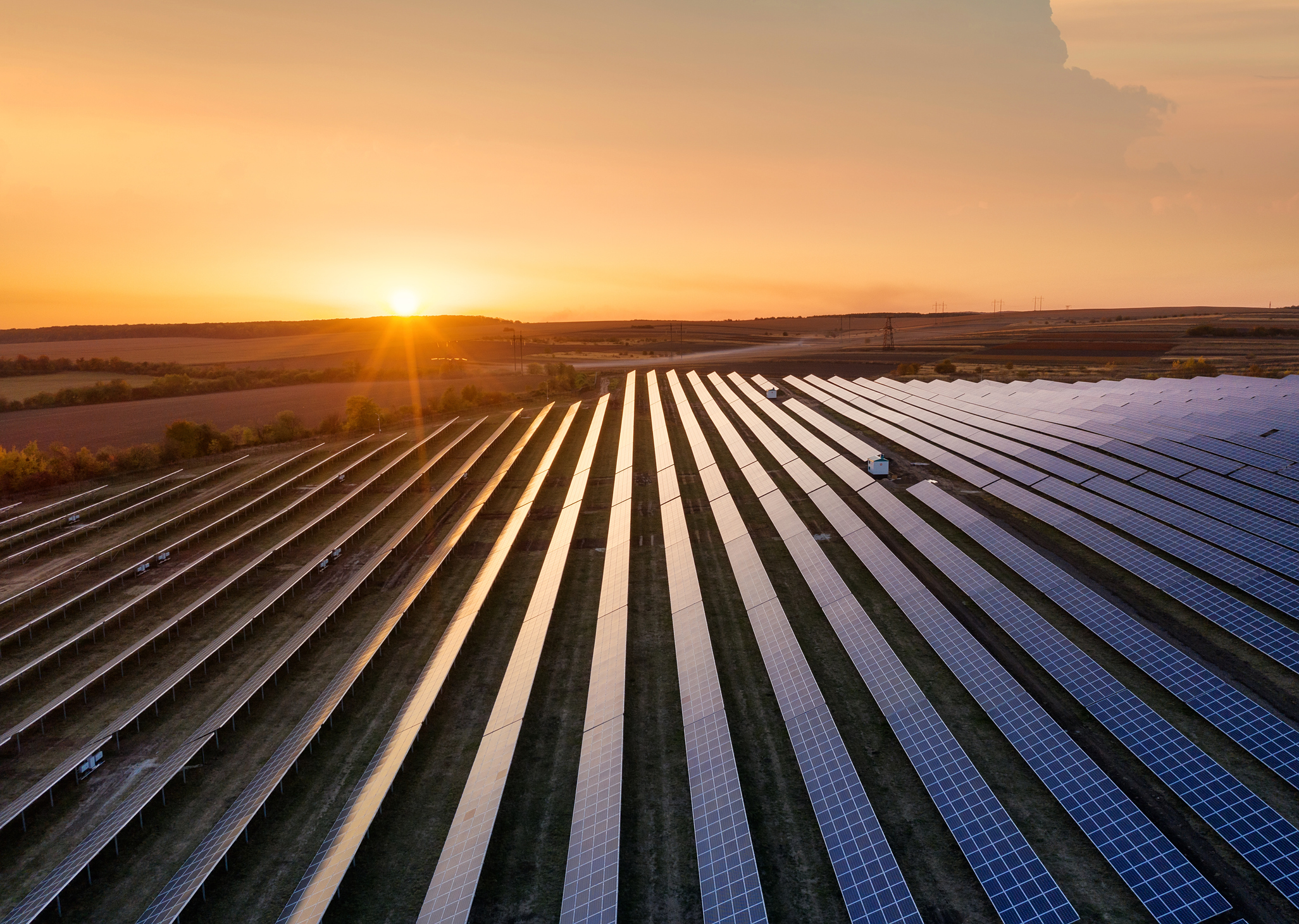Solar Energy and Community Solar in Maryland [2024 Guide]

Apr 1, 2024
With the increasing global focus on renewable energy, solar power is emerging as a crucial component of the transition. Maryland is taking a leading role in promoting solar energy adoption. Let’s delve into the world of solar energy in Maryland, examining the advantages of community solar projects and the financial incentives available, while also exploring the benefits of both rooftop and community solar options.
What is Solar Energy?
Solar energy refers to the conversion of sunlight into electricity, typically through the use of photovoltaic (PV) cells. These cells absorb photons from sunlight, generating a flow of electrons that produce electricity. The electricity generated can be used to power homes, businesses, and even electric vehicles, reducing dependence on fossil fuels and minimizing greenhouse gas emissions.
Environmental Benefits of Solar Power in Maryland
Solar power offers several environmental advantages that make it an attractive option for Maryland residents:
1. Reducing greenhouse gas emissions: Solar energy production does not emit greenhouse gases, contributing to a cleaner environment and helping Maryland achieve its goal of reducing greenhouse gas emissions by 40% by 2030.
2. Conserving water resources: Unlike traditional power plants that require significant amounts of water for cooling, solar power systems use little to no water, preserving this valuable resource.
3. Reducing air pollution: By decreasing dependence on fossil fuels, solar power helps reduce harmful air pollutants, such as sulfur dioxide and nitrogen oxides, which can lead to respiratory issues and other health problems.
Financial Advantages of Solar Energy in Maryland
There are several financial benefits to using solar energy in Maryland:
1. Lower energy bills: Solar energy systems can help homeowners and businesses save on electricity costs by generating their own power.
2. Maryland's net metering policy allows solar system owners to sell excess electricity back to the grid, offsetting energy consumption and reducing overall energy costs.
3. Tax credits and incentives: The state and federal government offer tax credits and incentives to make solar power more affordable, reducing the initial investment required for installation.
Solar Incentives and Rebates in Maryland
Maryland offers a variety of incentives and rebates to encourage solar energy adoption, including:
1. Residential Clean Energy Rebate Program: Homeowners can receive a rebate of up to $1,000 for installing a solar energy system.
2. Solar Renewable Energy Credits (SRECs): Solar energy system owners can earn SRECs, which can be sold to utilities, generating additional income.
3. Federal Investment Tax Credit (ITC): The federal government offers a tax credit equal to 26% of the cost of installing a solar energy system, making solar installations more affordable for homeowners and businesses alike.
Understanding Rooftop Solar: Key Factors to Consider
Before investing in a rooftop solar system, it's essential to consider several key factors:
1. Roof condition and orientation: The roof should be in good condition and have a suitable orientation (south-facing is ideal) to maximize sunlight exposure.
2. Available space: Ensure there is adequate space on the roof for solar panels without causing shading or structural issues.
3. Local regulations and permitting: Familiarize yourself with local building codes, zoning regulations, and permitting requirements related to solar installations.
4. Maintenance and warranties: Understand the ongoing maintenance requirements and warranties associated with your solar system to ensure optimal performance and longevity.

What is Community Solar?
Community solar refers to a shared solar energy system where multiple subscribers, typically households or businesses, join a nearby solar farm that produces energy on their behalf. This allows individuals who cannot or do not want to install solar panels on their property to still benefit from solar energy, while also promoting the growth of renewable energy sources.
Community Solar in Maryland
Maryland has been a leader in promoting community solar projects, with legislation passed in 2015 creating a pilot program for community solar initiatives. Since then, numerous community solar projects have been developed across the state, providing Maryland residents with an alternative to traditional rooftop solar installations.
Benefits of Joining a Community Solar Project
There are several advantages to participating in a community solar project:
1. No upfront costs: Community solar subscribers typically do not need to invest in solar panel installation, making it a more affordable option for many households.
2. Flexible participation: Subscribers can join or leave a community solar project at any time, offering more flexibility compared to rooftop solar systems.
3. Support for local economies: Community solar projects are often built within the communities they serve, creating jobs and stimulating economic growth.
Rooftop Solar vs Community Solar
Both rooftop and community solar offer benefits, but the choice between the two depends on individual needs and preferences. Rooftop solar allows homeowners to generate their own electricity, potentially saving more on energy bills, and providing a sense of energy independence. However, it requires an upfront investment and may not be suitable for all property types or locations. Community solar provides an alternative for those who cannot or do not want to install solar panels on their property. It offers flexibility in participation and typically does not require upfront costs. However, potential savings may be lower compared to a rooftop solar system.
What Are Some Alternatives to Community Solar?
If you’re looking for another easy way you can make a positive impact on the environment through clean energy, look no further than CleanChoice Energy. Our two products, Clean Electricity and Clean Energy Option, offer easy ways for homeowners and renters across the country to support clean energy. Since our founding in 2012, CleanChoice customers have had the collective impact equivalent to growing more than 105 million trees!
When you choose CleanChoice Energy as your electricity supplier with Clean Electricity, we'll ensure all the energy you use is replenished on the grid from wind and solar farms in your region. Your utility company stays the same. They will still maintain your lines and provide your bill. No service calls, equipment, or installation are needed—you'll simply see a line on your electric bill that says your “Supplier” is CleanChoice Energy. There are no upfront costs, sign up fees, or cancellation penalties, which makes choosing clean energy an easy and accessible option. Plus, it only takes two minutes to sign up!
With Clean Energy Option, a monthly membership adds 1,000 kilowatt-hours of clean energy to the grid, offsetting the monthly electricity use of an average American home—for just $19/month. Each month, we'll secure one Renewable Energy Certificate (REC) on your behalf, certifying 1,000 kilowatt-hours of clean energy were added to the power grid. You can sign up in minutes, and you can cancel any time with no cancellation fees.
Visit our website to explore what renewable energy options are available to you.
Stay in the know
Learn about clean energy, climate tips, special offers, and more



